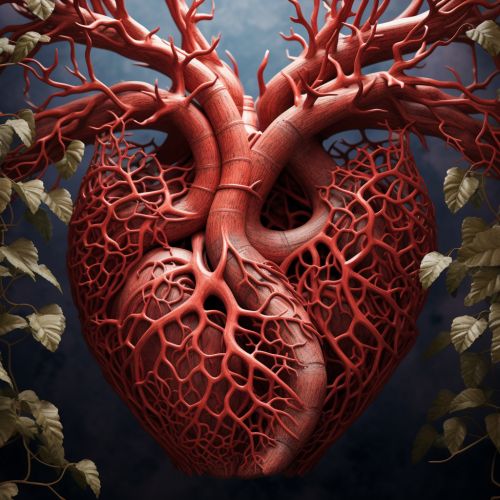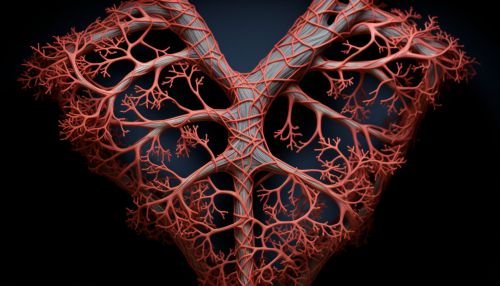Pulmonary circulation
Anatomy of the Pulmonary Circulation
The pulmonary arteries are large blood vessels that originate from the right ventricle of the heart. They split into two main branches, one for each lung, and further divide into smaller branches within the lungs. These branches eventually become tiny capillaries that surround the alveoli, where gas exchange occurs.


The oxygen-depleted blood from the body enters the right atrium of the heart and is pumped into the right ventricle. The right ventricle then pumps this blood into the pulmonary arteries, which carry it to the lungs. In the lungs, the blood picks up oxygen and sheds carbon dioxide, a waste product of metabolism. The oxygen-rich blood then returns to the heart via the pulmonary veins, ready to be pumped out to the rest of the body.
Physiology of the Pulmonary Circulation
The primary function of the pulmonary circulation is to oxygenate the blood and remove carbon dioxide. This process is facilitated by the thin walls of the capillaries and alveoli, which allow for efficient gas exchange. The oxygen binds to hemoglobin in the red blood cells, which then carry it back to the heart and on to the rest of the body.
The pulmonary circulation also plays a role in maintaining the acid-base balance of the body. Carbon dioxide is a weak acid, and its removal from the blood helps to keep the body's pH within a narrow range. The lungs also excrete other waste products, such as water vapor and heat, through the pulmonary circulation.
Pathophysiology of the Pulmonary Circulation
There are several diseases and conditions that can affect the pulmonary circulation. These include pulmonary hypertension, pulmonary embolism, and pulmonary edema.
Pulmonary hypertension is a condition in which the blood pressure in the pulmonary arteries is abnormally high. This can be caused by a variety of factors, including heart disease, lung disease, and blood clotting disorders. Pulmonary hypertension can lead to right heart failure if not treated.
Pulmonary embolism is a blockage in one of the pulmonary arteries, usually caused by a blood clot that has traveled from elsewhere in the body. This can be a life-threatening condition, as it can prevent blood from reaching the lungs and becoming oxygenated.
Pulmonary edema is a condition in which fluid accumulates in the lungs, making it difficult for oxygen to reach the blood. This can be caused by heart failure, lung injury, or high altitude.
Clinical Significance of the Pulmonary Circulation
Understanding the anatomy and physiology of the pulmonary circulation is crucial for the diagnosis and treatment of many diseases. For example, in patients with heart failure, the pressure in the pulmonary circulation can become elevated, leading to pulmonary edema. This can cause symptoms such as shortness of breath and fatigue, and can be detected by imaging studies such as a chest X-ray or echocardiogram.
Similarly, in patients with lung disease, the efficiency of gas exchange in the pulmonary circulation can be impaired. This can lead to a decrease in the oxygen content of the blood, which can be detected by a blood test called arterial blood gas analysis.
